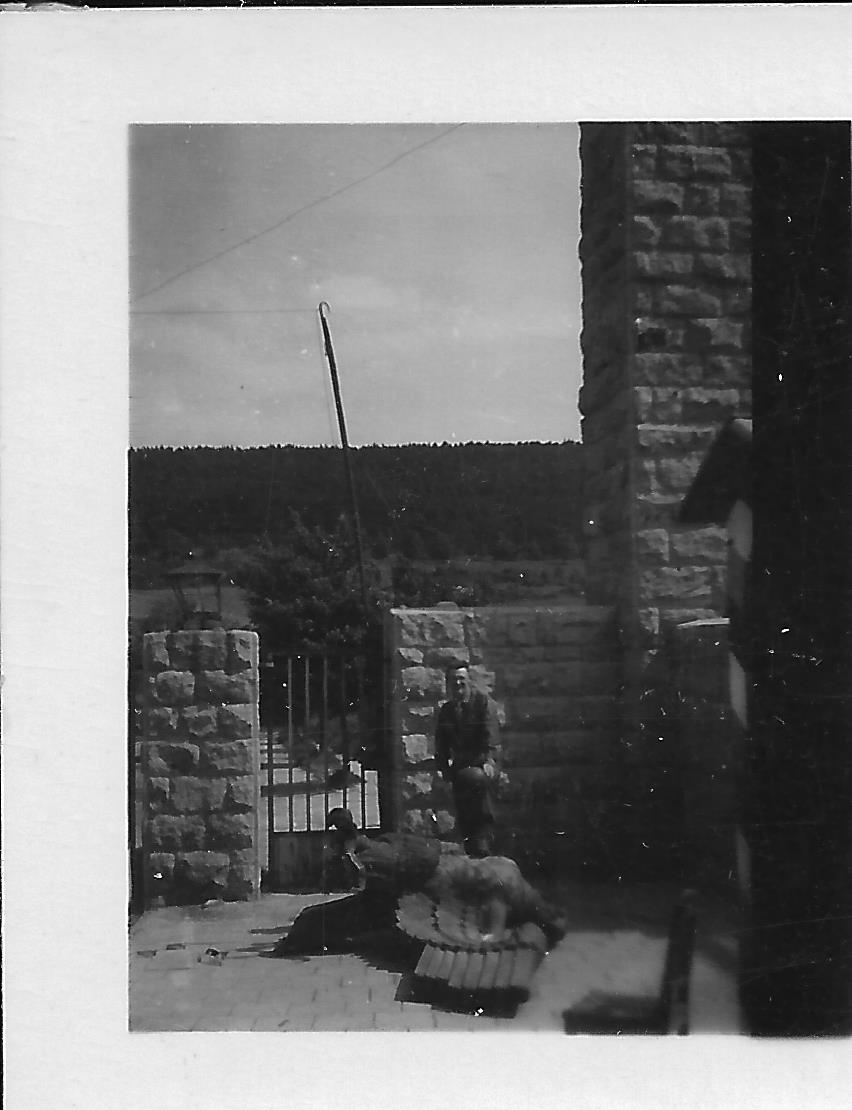 |
| Not sure where this was taken, but seems to be a fallen 3rd Reich eagle symbol |
June 6th Went on trip to Weimar to see Buchenwald internment camp. Former inmate took us through. Saw Jerry Air Field also. Trip took us through beautiful ski country.
Marilu: Wish I'd known this to ask him about it or that he had written more about his impressions and experiences for this day.
Follow the link for a description of the camp for those who visit now.
https://www.tracesofwar.com/sights/403/Concentration-Camp-Buchenwald.htm
Buchenwald concentration camp
| Buchenwald | |
|---|---|
| Concentration camp | |

Roll call at Buchenwald
| |
| Other names | Konzentrationslager Buchenwald |
| Location | Weimar, Germany |
| Operated by | Schutzstaffel |
| Commandant |
|
| Operational | 15 July 1937 – 11 April 1945 |
| Number of inmates | 280,000 |
| Killed | 56,545 |
| Liberated by | 6th Armored Division, United States Army |
| Website | www |
Buchenwald (German pronunciation: [ˈbuːxənvalt]; literally beech forest) was a Nazi concentration camp established on Ettersberg hill near Weimar, Germany, in July 1937. It was one of the first and the largest of the concentration camps within Germany's 1937 borders. Many actual or suspected communists were among the first internees.
Prisoners from all over Europe and the Soviet Union—Jews, Poles and other Slavs, the mentally ill and physically disabled, political prisoners, Romani people, Freemasons, and prisoners of war. There were also ordinary criminals and sexual "deviants". All prisoners worked primarily as forced labor in local armaments factories. The insufficient food and poor conditions, as well as deliberate executions, led to 56,545 deaths at Buchenwald of the 280,000 prisoners who passed through the camp and its 139 subcamps.[1] The camp gained notoriety when it was liberated by the United States Army in April 1945; Allied commander Dwight D. Eisenhower visited one of its subcamps.
From August 1945 to March 1950, the camp was used by the Soviet occupation authorities as an internment camp, NKVD special camp Nr. 2, where 28,455 prisoners were held and 7,113 of whom died. Today the remains of Buchenwald serve as a memorial and permanent exhibition and museum.
Postcards from Lu's scrapbook, displayed with photos of the airfield.
Postcards from Lu's scrapbook, displayed with photos of the airfield.
This is a news article from Lu's scrapbook about how local citizens were called in to clean up concentration camps and bury the dead, forced to face what had been going on right next to them.























Comments
Post a Comment